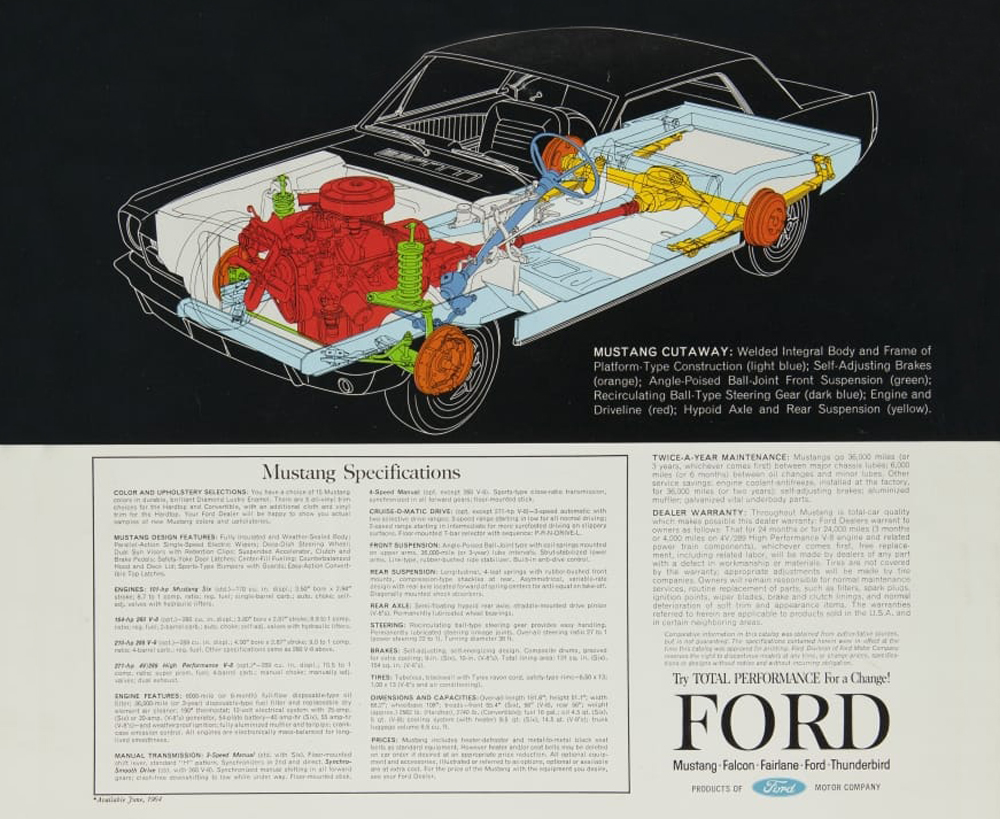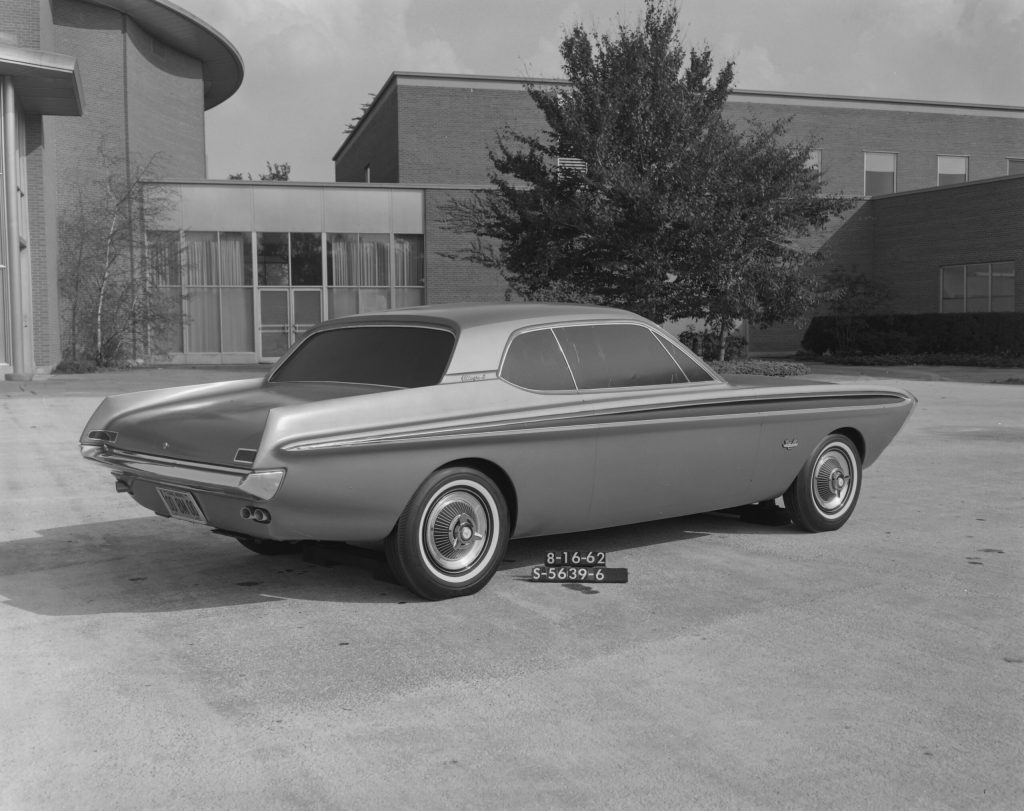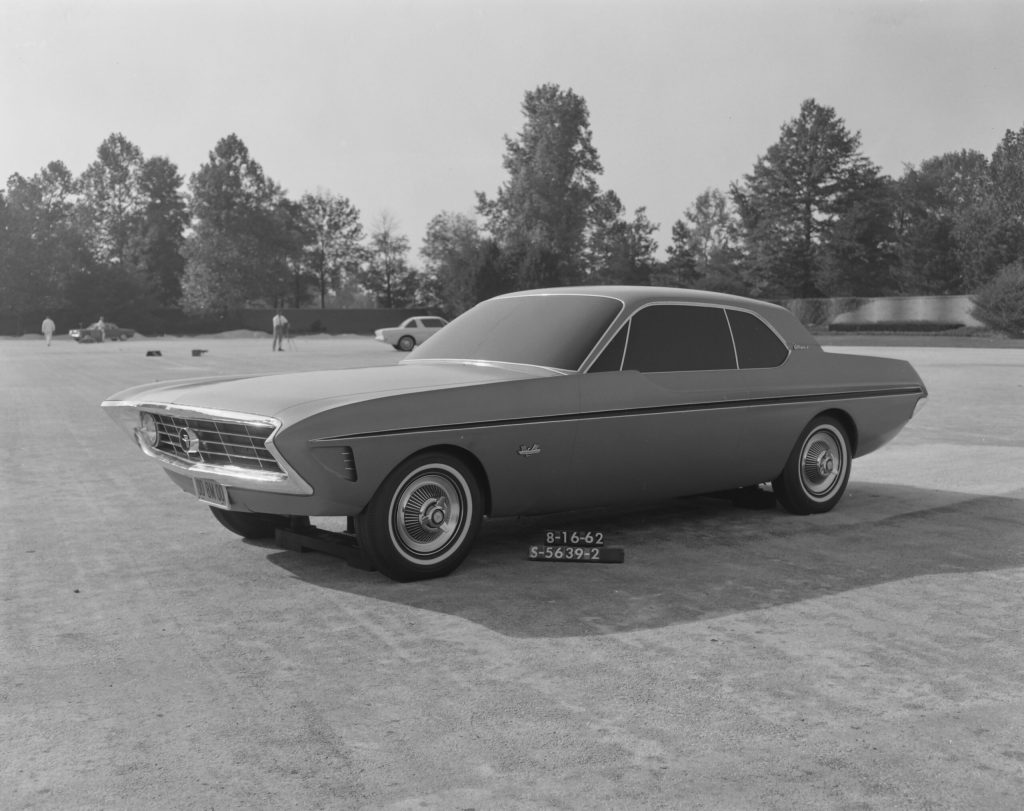17 April marked 60 years since the Ford Mustang’s public debut at the 1964 New York World’s Fair. The original pony car immediately became a pop-culture and automotive phenom, and it remains one of the most impactful cars in history. On our US site, we’ve been celebrating with stories of the events surrounding the Mustang’s launch, the history of the early cars, and tales from owners. Here we present thoughtful analysis of the car’s timeless design. If you’re interested in following our Mustang coverage, you can find more stories here. –Ed.

On the cover of its 6 January 1967 issue, TIME magazine featured not one person but a whole generation: 25-and-unders. Approximately 76 million Americans were born over the two decades following the end of WWII, and by 1966, people aged 25 and younger had become a demographic force to be reckoned with. This new “baby boomer” generation was closely observed by their parents, market researchers, and the state, yet it seemed hardly any of these elders truly understood them.
Well, anyone except Anthony Lido “Lee” Iacocca, who had just given them exactly what they wanted.



By the beginning of 1967, when TIME put the Mustang’s target demographic on its cover, Ford had already sold well over a million Mustangs. Of course, not every one of those buyers was in their 20s. However, as the old auto industry adage goes, you can sell a young person’s car to an older person but you can never do the opposite.
Many more Mustangs have since followed, and although most are rather handsome, none seems to have quite the same enduring, almost universal appeal of the 1965–66 original. It simply looks, for lack of a better word, “right.”


A design like this occupies an elusive aesthetic sweet spot, as difficult to express in words as it is to achieve in the metal. Yet it is immediately apparent to the eye. Few car designs hit that mark, much less projects like this one.
I’ll elaborate: The stories that we car buffs love to celebrate often involve bold, daring designs stemming from the unique vision of larger-than-life individuals. Yet the Mustang’s origin story couldn’t be more different from that romanticised ideal. An extensively researched corporate project that can’t be credited in its entirety to any single individual, the Mustang’s design wasn’t out to innovate or polarise. The roots of its enduring appeal are much more subtle. Brilliant execution had more to do with the car’s success than with the idea itself.
Design work on the Mustang commenced in late 1961, under the direction of Ford’s newly appointed design vice president, Gene Bordinat. By then, Detroit’s stylists had all but left behind the previous decade’s decorative excesses to embrace simpler volumes and large, unbroken surfaces. With its pin-sharp lines and sheer surfaces, the Mustang fit right into this mould, leaving proportions and detailing to set it apart from anything else in its price range.
To make the “Special Falcon” (as the Mustang was being referred to during development) a car that, in the words of Joe Oros, Ford’s head of car and truck styling at the time, “would look like fun,” Ford’s stylists gave it the proportions of a European sports car. That meant a long hood, short deck, and a hop-up on the rear fender to give the Mustang a slightly crouched, ready-to-pounce stance. It has a trim, lean volume whose deftly modelled surfaces have just the right amount of crowning to take away most of the severity such a boxy shape might otherwise evoke.






The mission to give the Mustang the appearance and character of a much more expensive sports car was then completed with particular details. Note the the nerf-blade front bumper and the now-iconic large “mouth” above it. The latter was inspired by period Ferraris, while the idea of fitting a big die-cast emblem inside it came from the large trident badge found in the Maserati 3500 GT‘s grille. Interestingly, the design department’s original intention for the Mustang’s signature side scallop was to feature a functional intake to feed air to the rear brakes.
However, since the additional ducting required would have added about $5 per car in production costs, it became a merely decorative item. Similar cost reasons also led the six individual taillights initially envisioned by Ford’s stylists to be grouped into two bezels.
Still, a neatly executed design and a perfectly timed launch can only go so far in explaining the original Mustang’s staying power. In fact, I believe there’s one more aspect of its design that, although rarely discussed, has been key to making it such a perennial favourite.

As Oros recalled years later, “We talked about the sporty car [referring to the Mustang] not being too masculine, too macho. It had to appeal to women as well as to men. We agreed that it had to be sporty and personal, that young people would enjoy driving it.”
That decision is what sets the original Mustang’s design apart from the ones that followed. The car looks dashing and sporty even in its most basic form, and the effect is care-free and unintimidating. Even in its hottest, “Shelby-fied” GT350 spec, the first iteration of the Mustang has a purposeful look rather than an outright aggressive one.

As we all know, it didn’t stay that way for long.
Caught up amid Detroit’s late-’60s horsepower war, the Mustang put on muscle and a whole lot of fat in the space of a few years. Although that resulted in some genuinely epic machines, the Mustang’s customer base ended up shrinking year-on-year, until Ford reversed course with Iacocca’s “little jewel,” the controversial Mustang II.

The current Mustang is the best ever made by every on-paper metric, but it, too, represents much more of Bunkie Knudsen’s vision of the model than Iacocca’s. There’s nothing wrong with that, mind you, and things probably could not be any different, especially in a world where pretty much every car and truck is styled as if it’s out for blood.
Still, there’s something to be said about a design that not only remains just as coveted now as it was 60 years ago but looks like it will be for the foreseeable future. Despite being very much a “design by committee,” the original Mustang is also the definition of a design classic. On the one hand, it epitomises the era for which it was conceived, yet on the other, it is utterly timeless. Just as timeless and universal is the message the car radiates. Whether it’s a straight-six on hubcaps or a loaded 289 Hi-Po, a 1965–66 Mustang always looks like a good time.
And who doesn’t like a good time?

Matteo Licata received his degree in Transportation Design from Turin’s IED (Istituto Europeo di Design) in 2006. He worked as an automobile designer for about a decade, including a stint in the then-Fiat Group’s Turin design studio, during which his proposal for the interior of the 2010–20 Alfa Romeo Giulietta was selected for production. He next joined Changan’s European design studio in Turin and then EDAG in Barcelona, Spain. Licata currently teaches automobile design history to the Transportation Design bachelor students of IAAD (Istituto di Arte Applicata e Design) in Turin.









The Mustang crealy had inspiration from the Merceded 230 and 250 SL cars which were also sporty and based on larger sedans and sold with straight 6 engines encouraging the long tall hood line. I see those other designs they considered, none look as good and none follow the Benz outline as well!